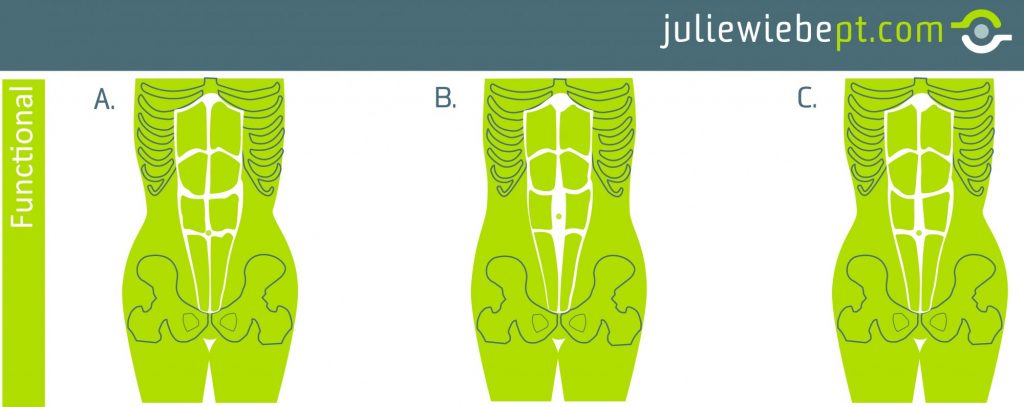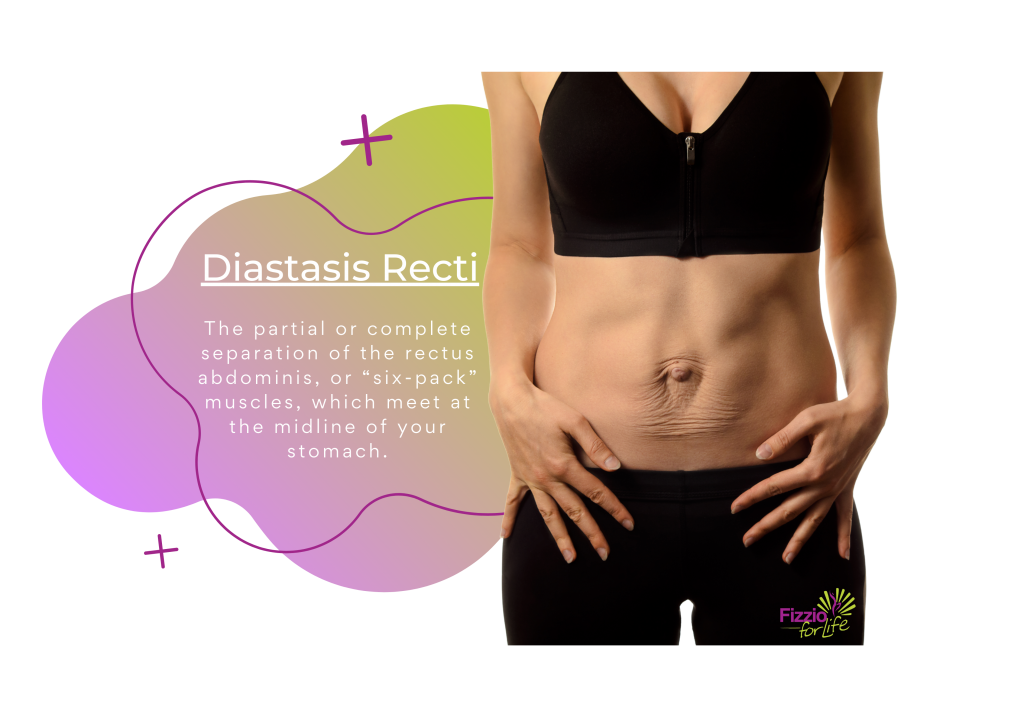Ever try to sit up and your belly has changed shape and suddenly you have a peaked mountain shape appear from nowhere? This is called either coning or doming and can be the result of diastasis recti. Simply it means that the connective tissue (Linea Alba) between the 2 sides of your abdominal muscles has been stretched often by pregnancy but can also be due to a rapid increase in weight to waist area – so men can have this too! So when you get up out of bed, or do exercises on your back there is an increase in pressure pushing from the inside and this results in a bulge in the middle of your belly.
Is this normal?
Well, this is a tricky question because everyone has this connective tissue and it is there to expand out. Considering the growth experienced with pregnancy, the full feeling after a big meal and even breathing, this connective tissue is designed to stretch. Imagine if it didn’t do this stretching – the pain after Christmas lunch would be excruciating! BUT if there is a lack of tension in this tissue resulting that following it being stretched it is not able to return to where it started from, then there can be a problem. This can lead to an unstable trunk which may result in back pain and pelvic pain down the track if the right treatment is not obtained.
Can this be changed?
For sure!! Making sure exercises are safe and not in fact making it worse is very important, and getting early physiotherapy treatment following birth (approx 6 weeks postpartum) is key to making sure there are no further problems in the future. However, don’t be too concerned if you didn’t realise you had a weakness in this area straight away, positive changes can be made with the right help. The whole idea is to make sure that both sides of your abdomen are working together to make movement happen in a coordinated fashion. So it is not really about closing the gap but ensuring that tension is created and restored.
Just a reminder that everyone has a diastasis – we all have a gap between our abs – and just like the rest of our bodies, we are all slightly different and have different sized gaps prior to the stretching experienced during pregnancy. That means that even what might be considered a smaller sized gap for some, might still need some extra care to restore correct function. It is helpful also to realise that often we don’t know how big of a gap we start with prior to pregnancy so don’t know what the baseline width we are aiming to return to. Therefore the goal is to improve coordination of movement and stiffness of the fascia to be able to support your trunk and reduce the risk of pain occurring.
The crux of it is – if you have any concerns please seek help!! Post-pregnancy recovery is important for everyone, despite the size of your diastasis.



